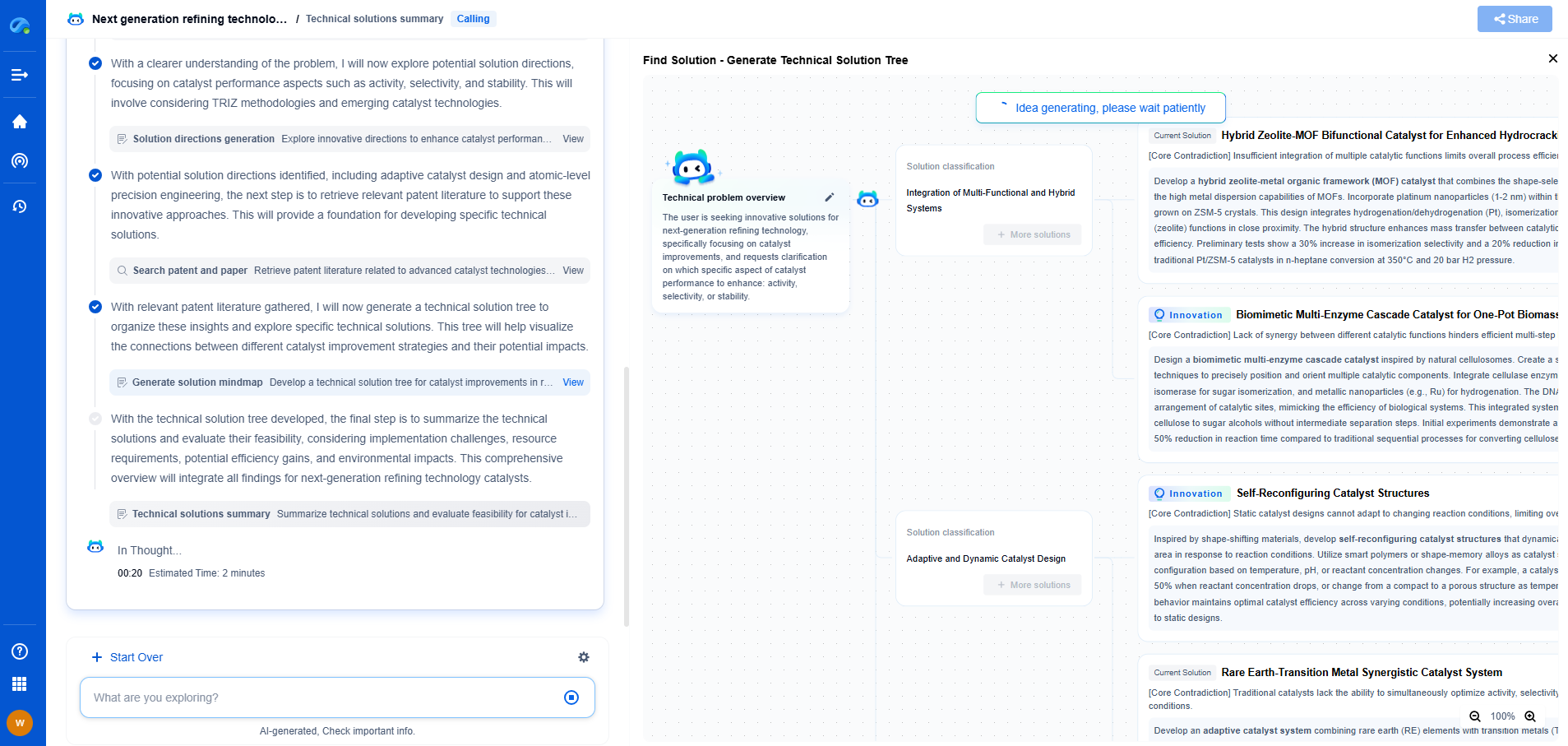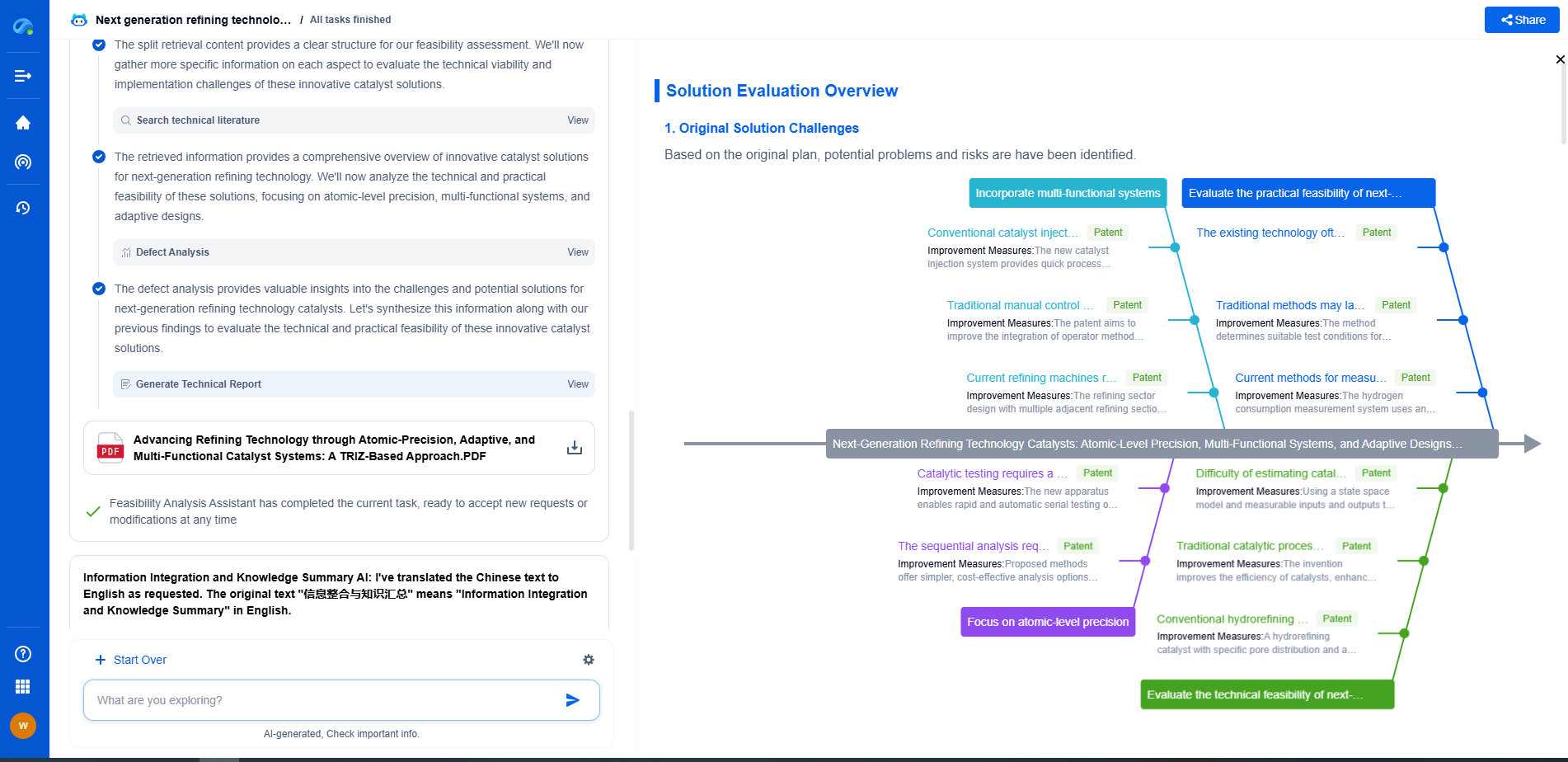What Is Reinforcement Learning in AI?
JUN 26, 2025 |
Reinforcement learning (RL) is a fascinating realm of artificial intelligence that draws inspiration from behavioral psychology. Unlike supervised learning, where models learn from a set of labeled examples, reinforcement learning involves an agent interacting with an environment and learning to make decisions by receiving feedback in the form of rewards or penalties. This learning paradigm is akin to how humans and animals learn from experience, trial, and error, making it an intuitive and highly applicable approach to a wide range of real-world problems.
The Core Components of Reinforcement Learning
At its core, reinforcement learning consists of several key components:
1. **Agent**: The decision maker that learns and acts. It could be a robot, a software program, or any entity that interacts with the environment.
2. **Environment**: Everything the agent interacts with. It provides feedback in the form of states and rewards based on the agent's actions.
3. **State**: A representation of the current situation in which the agent finds itself. It characterizes the environment at a specific point in time.
4. **Action**: The set of all possible moves the agent can make in a given state.
5. **Reward**: Feedback from the environment used to evaluate the action's effectiveness. Positive rewards encourage the agent to repeat actions, while negative rewards discourage them.
6. **Policy**: A strategy or rule set that the agent uses to determine its actions based on the current state.
The Learning Process in Reinforcement Learning
The process of reinforcement learning is cyclical and iterative. The agent perceives its state in the environment, selects an action based on a policy, and receives a reward (or penalty) as feedback. This feedback is used to update the policy, enabling the agent to make more informed decisions over time.
One of the most popular algorithms used in reinforcement learning is Q-learning. It helps agents learn optimal actions in a given state by estimating the value of action-reward pairs. This is done through a Q-table, where the agent continuously updates its estimates to converge on the optimal policy.
Applications of Reinforcement Learning
Reinforcement learning's versatility makes it suitable for a wide array of applications. In robotics, RL enables machines to learn complex tasks such as walking, grasping, or assembly operations. In the realm of finance, RL algorithms are employed to develop trading strategies by predicting market trends and optimizing investment decisions.
Furthermore, RL has made significant contributions to game-playing AI, with notable successes such as Google's AlphaGo, which defeated the world champion in the game of Go. RL is also making strides in healthcare, optimizing treatment strategies by personalizing them to patient responses.
Challenges and Future Prospects
Despite its potential, reinforcement learning is not without challenges. The balance between exploration (trying new actions) and exploitation (leveraging known actions) is crucial but difficult to master. Additionally, the requirement for vast amounts of data and computational power can be a barrier to its deployment.
However, advancements in algorithms, computational power, and simulation environments continue to drive RL's evolution. As these challenges are addressed, reinforcement learning is poised to become an even more powerful tool, fostering innovations across various fields.
Conclusion
Reinforcement learning represents a unique approach within AI that closely mimics the way humans learn from their environment. Its capacity to solve complex tasks through interaction and feedback positions it as a transformative force in technology and beyond. As the field continues to advance, its applications will likely expand, ushering in new possibilities and reshaping industries worldwide.
Unleash the Full Potential of AI Innovation with Patsnap Eureka
The frontier of machine learning evolves faster than ever—from foundation models and neuromorphic computing to edge AI and self-supervised learning. Whether you're exploring novel architectures, optimizing inference at scale, or tracking patent landscapes in generative AI, staying ahead demands more than human bandwidth.
Patsnap Eureka, our intelligent AI assistant built for R&D professionals in high-tech sectors, empowers you with real-time expert-level analysis, technology roadmap exploration, and strategic mapping of core patents—all within a seamless, user-friendly interface.
👉 Try Patsnap Eureka today to accelerate your journey from ML ideas to IP assets—request a personalized demo or activate your trial now.
- R&D
- Intellectual Property
- Life Sciences
- Materials
- Tech Scout
- Unparalleled Data Quality
- Higher Quality Content
- 60% Fewer Hallucinations
Browse by: Latest US Patents, China's latest patents, Technical Efficacy Thesaurus, Application Domain, Technology Topic, Popular Technical Reports.
© 2025 PatSnap. All rights reserved.Legal|Privacy policy|Modern Slavery Act Transparency Statement|Sitemap|About US| Contact US: help@patsnap.com

